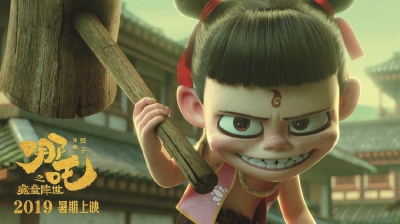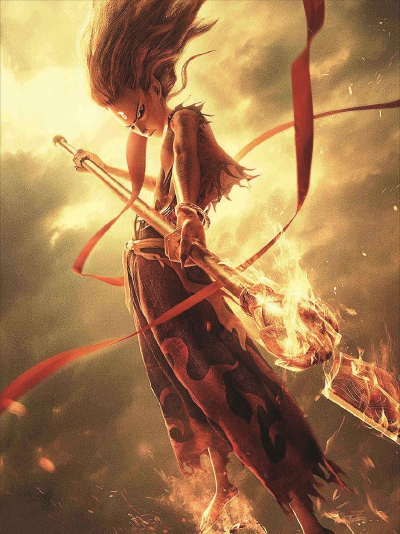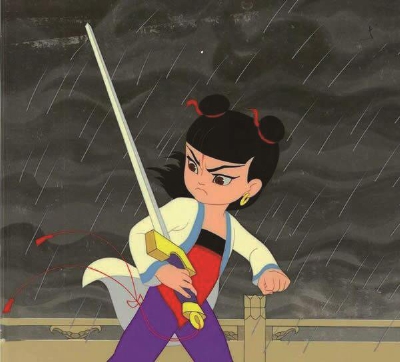


Ne Zha, who once caused a controversy because of her "ugly shape", became an explosion in this summer’s summer file after uncovering the true face of Lushan Mountain. The film will be released this Friday, but the box office at 10 o’clock has exceeded 60 million yuan.
"Ugly Nezha" turned over against the wind, which is the normal way to open a classic character prototype — — The reason why the "classics" have the energy to survive lies in the fact that the historical heritage is constantly infused with the current vitality. "Who moved our Nezha" is not a problem.
In 1979, Shanghai Film Studio released "Where is the Sea?" The climax of the conflict in the film was that the boy in white committed suicide in the torrential rain: "Dad, I’ll give you back my flesh and blood, so I won’t bother you." Since then, this hopeless teenager who mingled with the bottom people and resisted patriarchy and authoritarianism has been deeply rooted in the hearts of the people. So few people realize that Nezha, full of romantic feelings, is a "new story" role. On the contrary, Ne Zha gave the protagonist an ugly and mixed black history, and returned to the source of the characters.
To clarify the evolution of Nezha’s image, we must start with his father. The well-known "King Tota Li Tian" is a folk interpretation that forcibly binds Li Jing and King Tota, two irrelevant figures. Li Jing was a founding star of the Tang Dynasty. In the legend of the Tang Dynasty, he was also called "the three heroes of the dust" with the campus guest and Hong Fu. The scientific name of King Tota is the King of Vishamen, and he is one of the four kings in Buddhist scriptures. In the early Tang Dynasty, Buddhist countries in the western regions in Khotan (now Hotan, Xinjiang) began to believe in Vishamen Heavenly King, and this belief was introduced to the Central Plains. As a result of sinicization, Vishamen Heavenly King of Tota left the "Big Four" and became a deity who was worshipped separately. In the Water Margin, Lin Chong was wronged and demoted, guarding the Heavenly King Hall, where the "Heavenly King" was the Vishamun who flew solo.
According to Buddhist scriptures, Nezha is the son of the King of Vishamun. In the battle, Nezha not only helped Torre Tota, but also helped his father lead an army of hags, so he was nicknamed "Ghost King" and "General Hag". In the religious books of the Tang Dynasty, Nezha was described as "evil seeing everywhere", which had nothing to do with beautiful teenagers. In the Yuan Dynasty’s "A Complete Book of Searching for Gods from the Origins of Three Religions", Nezha is six feet tall, which is 20 meters high according to today’s measurement. At the end of Yuan Dynasty, Luo Guanzhong wrote "Three Sui Ping Yao Biography", and Nezha "three heads are like three green hills, and six arms are like six mountains. When he opens his mouth, blood splashes out four fangs".
Nezha in Buddhist legend is a giant god who makes the three realms peaceful, but he understands Buddhism and becomes a god on the premise that he returns his flesh and blood to his parents. The position of this story is in conflict with the filial piety advocated by Confucianism. With the sinicization of Buddhism, the origin of Nezha has been constantly embellished. Su Dongpo’s younger brother, Su Zhe, wrote a poem "Poems of Nezha": The king of the north has a crazy son who only worships Buddha but not his father. The Buddha knows its folly, but the pagoda makes the father raise it with his left hand. Children come to see the Buddha’s head and bow down, which is slightly similar to worshipping Buddha. This poem contains a lot of information. In order to get rid of the suspicion of "unfilial", Buddhism defined Nezha as crazy and stupid, while the Buddha painstakingly juggled between father and son, and came up with a method of "Tota" to make him worship Buddha like his father. In a word, Buddha is filial piety.
When Wu Cheng’en wrote about The Journey to the West, he expanded Su Zhe’s poem into Tathagata as an old aunt: "Nezha cut the flesh and gave it back to his mother, eviscerated the bones and gave it back to his father, with a little soul, and went to the western paradise to tell the Buddha. The Buddha used the lotus root as a bone and the lotus leaf as a garment, and read the mantra of coming back to life, so Nezha got his life. Later, he wanted to kill the heavenly king and avenge the evisceration. The heavenly king was helpless and begged the Tathagata. If the Tathagata values harmony, he will be given a golden pagoda with exquisite Buddhist relics. There are buddhas on the pagoda, and Nezha will be asked to take the Buddha as his father, thus settling his grievances. "
Wu Cheng’en’s The Journey to the West is about the works of Jiajing period. After two generations, in the Wanli period, the story of Nezha was rewritten in the Book of Gods. Borrowing the design of Hong Haier in The Journey to the West, the author designed Nezha as a beautiful young man, and the scene of Nezha’s resurrection from the lotus was given to Taiyi, transforming a Buddhist prototype into a Taoist child.
The "three sons of Chen Tang Guan" in the list of gods is not a good crop. When he took a bath, he disagreed with the sea patrol hag and killed the other party; Ao Bing looked for his theory and was skinned and cramped; The old dragon king was so angry that he went to the imperial court and was beaten outside Tianmen. "My father is the master of a town. I took a bath here in the summer, and the hag came to scold me. I killed him, but it’s no harm. " "I was impatient, then killed him two lives, is also a small matter. Even if you, an old fool, were killed, you might as well do something. " A few lives, but now he is a "might as well". The old dragon king asked him to pay for his life, and he committed suicide in Chentangguan, which, to some extent, also brought him consequences. Of course, in order to make up for him, the list of gods wrote, "This child was born in an ugly time, and the principal offender killed the ring." In ancient times, social unrest inevitably led to civil catastrophe. Novelists, though vaguely aware of this law, lacked philosophical speculation, and created characters like "weapons of mass destruction". Nezha was such a person.
The context is more important than the plot in the transformation and restatement of the classics, which is a clear example. China society, which has experienced a tortuous process of modernity, no longer needs an "evil spirit" of Machamp, nor is it entangled in the balance between deity and filial piety, so the plot of deja vu has evolved into a new spirit. In order to echo the history of China in the first half of the 20th century, Nezha became a "rebel" who broke away from his family. The fuse of his departure was to stand on the side of most suffering and fight against the arrogant and extravagant dignitaries. He went through all the robbery, completely cut off relations with his hypocritical father and went to the people.
Tracing back to the source, the beautiful and pure painting style of "Where is the Sea" is the real subversive, but the ugly "magic boy" is the "evil spirit" who returned after leaving for half a year, returning to the fierceness of this prototype and bringing back the proposition of fatherly kindness and filial piety. As for "children with love education and transformation problems", "my choice determines what kind of person I become" and "my fate is not determined by the sky", all these are the new themes of contemporary pop culture. ■ Our reporter Liu Qing